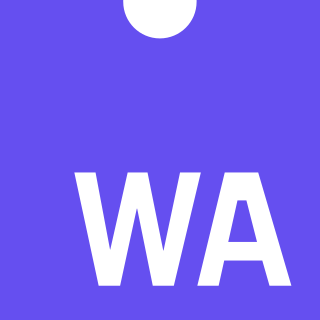Related Research Articles
Add-on is the Mozilla term for software modules that can be added to the Firefox web browser and related applications. There are three types: extensions, themes, and plug-ins. Mozilla hosts them on its official add-on website.
Google Developers is Google's site for software development tools and platforms, application programming interfaces (APIs), and technical resources. The site contains documentation on using Google developer tools and APIs—including discussion groups and blogs for developers using Google's developer products.

OpenSocial is a public specification that defines a component hosting environment (container) and a set of common application programming interfaces (APIs) for Web-based applications. Initially, it was designed for social network applications and developed by Google along with MySpace and a number of other social networks. More recently, it has become adopted as a general use runtime environment for allowing untrusted and partially trusted components from third parties to run in an existing web application. The OpenSocial Foundation moved to integrate or support numerous other Open Web technologies. This includes OAuth and OAuth 2.0, Activity Streams, and Portable Contacts, among others.
Google Native Client (NaCl) is a sandboxing technology for running either a subset of Intel x86, ARM, or MIPS native code, or a portable executable, in a sandbox. It allows safely running native code from a web browser, independent of the user operating system, allowing web apps to run at near-native speeds, which aligns with Google's plans for Chrome OS. It may also be used for securing browser plugins, and parts of other applications or full applications such as ZeroVM.

WebGL is a JavaScript API for rendering interactive 2D and 3D graphics within any compatible web browser without the use of plug-ins. WebGL is fully integrated with other web standards, allowing GPU-accelerated usage of physics and image processing and effects as part of the web page canvas. WebGL elements can be mixed with other HTML elements and composited with other parts of the page or page background.
WebRTC is a free, open-source project providing web browsers and mobile applications with real-time communication (RTC) via simple application programming interfaces (APIs). It allows audio and video communication to work inside web pages by allowing direct peer-to-peer communication, eliminating the need to install plugins or download native apps. Supported by Apple, Google, Microsoft, Mozilla, and Opera, WebRTC specifications have been published by the World Wide Web Consortium (W3C) and the Internet Engineering Task Force (IETF).

Firefox OS is a discontinued open-source operating system – made for smartphones, tablet computers and smart TVs – designed by Mozilla and external contributors. It is based on the rendering engine of the Firefox web browser, Gecko, and on the Linux kernel. It was first commercially released in 2013.
Content Security Policy (CSP) is a computer security standard introduced to prevent cross-site scripting (XSS), clickjacking and other code injection attacks resulting from execution of malicious content in the trusted web page context. It is a Candidate Recommendation of the W3C working group on Web Application Security, widely supported by modern web browsers. CSP provides a standard method for website owners to declare approved origins of content that browsers should be allowed to load on that website—covered types are JavaScript, CSS, HTML frames, web workers, fonts, images, embeddable objects such as Java applets, ActiveX, audio and video files, and other HTML5 features.

PDF.js or pdf.js is a JavaScript library that renders Portable Document Format (PDF) files using the web standards-compliant HTML5 Canvas. The project is led by the Mozilla Foundation after Andreas Gal launched it in 2011.

Servo is an experimental browser engine developed to take advantage of the memory safety properties and concurrency features of the Rust programming language. The project was initiated by Mozilla Research with effort from Samsung to port it to Android and ARM processors. The prototype seeks to create a highly parallel environment, in which many components are handled by fine-grained, isolated tasks.

Sketchfab is a platform to publish, share, discover, buy and sell 3D, VR and AR content. It provides a viewer based on the WebGL and WebXR technologies that allows users to display 3D models on the web, to be viewed on any mobile browser, desktop browser or Virtual Reality headset.

Ember.js is an open-source JavaScript web framework, utilizing a component-service pattern. It allows developers to create scalable single-page web applications by incorporating common idioms, best practices, and patterns from other single-page-app ecosystem patterns into the framework.
Google Cast is a proprietary protocol developed by Google for playing Internet-streamed audio/video content on a compatible consumer device. The protocol is used to initiate and control playback of content on digital media players, high-definition televisions, and home audio systems using a mobile device, personal computer, or smart speaker. The protocol was first launched on July 24, 2013, to support Google's first-generation Chromecast player. The Google Cast SDK was released on February 3, 2014, allowing third parties to modify their software to support the protocol. According to Google, over 20,000 Google Cast-ready apps were available as of May 2015. Support for Google Cast has since been integrated into subsequent devices, such as the Nexus Player and other Android TV devices, as well as soundbars, speakers, and later models of the Chromecast. Consumer devices that natively support the protocol are marketed as Chromecast built-in. As of October 2017, over 55 million Chromecasts and Chromecast built-in devices have been sold.
Google Cloud Platform (GCP), offered by Google, is a suite of cloud computing services that runs on the same infrastructure that Google uses internally for its end-user products, such as Google Search, Gmail, file storage, and YouTube. Alongside a set of management tools, it provides a series of modular cloud services including computing, data storage, data analytics and machine learning. Registration requires a credit card or bank account details.

WebAssembly is an open standard that defines a portable binary-code format for executable programs, and a corresponding textual assembly language, as well as interfaces for facilitating interactions between such programs and their host environment. The main goal of WebAssembly is to enable high-performance applications on web pages, but the format is designed to be executed and integrated in other environments as well, including standalone ones.
Eddystone is a Bluetooth Low Energy beacon profile released by Google in July 2015. The Apache 2.0-licensed, cross-platform, and versioned profile contains several frame types, including Eddystone-UID, Eddystone-URL, and Eddystone-TLM. Eddystone-URL is used by the Physical Web project, whereas Eddystone-UID is typically used by native apps on a user's device, including Google's first party apps such as Google Maps.
WebVR was an experimental JavaScript application programming interface (API) that enabled applications to interact with virtual reality devices, such as the HTC Vive, Oculus Rift, Google Cardboard or Open Source Virtual Reality (OSVR) in a web browser. It was implemented in Firefox and Chromium-based browsers before being deprecated and removed. The WebVR API was superseded by a more powerful WebXR API that is capable of representing virtual reality and augmented reality devices simultaneously.
Widevine is a proprietary digital rights management (DRM) technology from Google used by the Google Chrome and Firefox web browsers, Android MediaDRM, Android TV, and other consumer electronics devices. Widevine technology supports various encryption schemes and hardware security to restrict consumer access to distributed video content according to rules defined by content owners. Widevine mainly provides a Content Decryption Module (CDM) as a client to Google Chrome and other browsers and devices. Widevine is free to use by content providers and as such does not charge any fees for license generation or device integration.
Flutter is an open-source UI software development kit created by Google. It is used to develop applications for Android, iOS, Linux, Mac, Windows, Google Fuchsia, and the web from a single codebase.
DNS over HTTPS (DoH) is a protocol for performing remote Domain Name System (DNS) resolution via the HTTPS protocol. A goal of the method is to increase user privacy and security by preventing eavesdropping and manipulation of DNS data by man-in-the-middle attacks by using the HTTPS protocol to encrypt the data between the DoH client and the DoH-based DNS resolver. By March 2018, Google and the Mozilla Foundation had started testing versions of DNS over HTTPS. In February 2020, Firefox switched to DNS over HTTPS by default for users in the United States.
References
- ↑ GitHub: Paul Kinlan: WebIntents
- ↑ TechCrunch: Google Announces Plans To Bake Android-Like Web Intents Into Chrome
- ↑ Chrome 18 Web Intents support
- 1 2 Status of web intents in Chrome
- ↑ Web Intents FAQ
- ↑ Codebits: Web Intents Proxies
- ↑ AddThis blog: A Step for Open Sharing: AddThis Integrates Web Intents
- ↑ Chromium Blog: Connecting Web Apps with Web Intents
- ↑ TechCrunch: Mozilla Labs Launches 'Web Activities' Experiment, Lets Web Apps Talk To Each Other
- ↑ Mozilla Labs: Web Apps Update – experiments in Web Activities, App Discovery